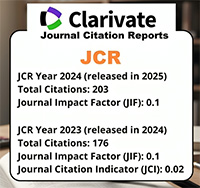Clinical value of four-dimensional hysterosalpingo-contrast sonography assisted by intrauterine pressure measurement for tubal patency evaluation.
Valor clínico de la histerosalpingo-sonografía 4D por contraste, asistida por medición de la presión intrauterina, para evaluar la permeabilidad tubárica.
Resumen
Nuestro objetivo fue explorar el valor clínico de la histerosalpingo-sonografía con contraste en cuatro dimensiones (4D-HyCoSy) asistida por la medición de la presión intrauterina para evaluar la permeabilidad tubárica. Se seleccionaron como sujetos un total de 132 pacientes diagnosticadas como infertilidad por factor tubárico desde febrero de 2018 hasta febrero de 2021. Con los resultados del diagnóstico de histerosalpingografía como estándar de oro, se realizó 4D-HyCoSy para todas las pacientes y el estado de las trompas de Falopio se clasificó como permeable, ocluída y parcialmente ocluída. Según la función de las trompas de Falopio, los resultados del diagnóstico 4D-HyCoSy revelaron que las trompas de Falopio mostraban permeabilidad bilateral, permeabilidad incompleta (incluida oclusión parcial bilateral, permeabilidad unilateral y oclusión parcial unilateral, permeabilidad unilateral y oclusión unilateral), oclusión parcial unilateral y oclusión unilateral, y oclusión bilateral. El valor de corte de la presión intrauterina máxima se determinó utilizando la curva característica operativa del receptor (ROC), la especificidad y el área bajo la curva ROC (AUC) entre 4D-HyCoSy sola y 4D-HyCoSy asistida por la medición de la presión intrauterina. Hubo diferencias significativas en la presión intrauterina máxima entre pacientes con permeabilidad bilateral, permeabilidad incompleta, oclusión parcial unilateral y oclusión unilateral y oclusión bilateral (p<0,05). Los valores de corte correspondientes de la presión intra-uterina máxima fueron 24,42, 36,34 y 47,68 kPa, y los valores de AUC fueron 0,812, 0,836 y 0,827, respectivamente. El modelo FSM mostró que el AUC de 4D-HyCoSy asistida por la presión intrauterina máxima fue de 0,85, con una sensibilidad más alta (88,13%) que la de 4D-HyCoSy (p<0,05). 4D-HyCoSy asistido por la medición de la presión intrauterina tiene un valor diagnóstico significativo en la evaluación de la permeabilidad tubárica.
Descargas
Citas
Ruan SM, Zheng Q, Wang Z, Hu HT, Chen LD, Guo HL, Xie XY, Lu MD, Li W, Wang W. Comparison of real-time two-dimensional and three-dimensional contrasten-hanced ultrasound to quantify flow in an in vitro model: a feasibility study. Med Sci Monit 2019; 25: 10029-10035. https://doi.org/10.12659/MSM.919160.
Carson SA, Kallen AN. Diagnosis and management of infertility: a review. JAMA 2021; 326(1): 65-76. https://doi.org/10.1001/jama.2021.4788 .
Ludwin I, Ludwin A, Nastri CO, Coelho Neto MA, Kottner J, Martins WP. Interrater reliability of air/saline HyCoSy, HyFoSy and HyFoSy combined with power doppler for screening tubal patency. Ultraschall Med 2019; 40(1): 47-54. https://doi.org/10.1055/s-0043-120111.
Chen F, Quan J, Huang P, You X. Hysterosalpingo-contrast sonography with four-dimensional technique for screening fallopian tubal patency: let’s make an exploration. J Minim Invasive Gynecol 2017; 24(3): 407-414. https://doi.org/10.1016/j. jmig.2016.12.011.
Gu P, Yang X, Zhao X, Xu D. The value of transvaginal 4-dimensional hysterosalpingo-contrast sonography in predicting the necessity of assisted reproductive technology for women with tubal factor infertility. Quant Imaging Med Surg 2021; 11(8): 3698-3714. https://doi.org/10.21037/qims-20-1193.
Aggarwal D. Can HyCoSy replace laparos copy and hysteroscopy as a method to assess tubal patency and uterine cavity lesions. IOSR-JDMS 2019; 18(5): 80-83. https://doi.org/10.9790/0853-1805098083.
Ojha K, Goel T, Vinayagam D. Evaluation of Tubal Patency (HyCoSy, Doppler). In Ultrasound Imaging in Reproductive Medicine 2019 (pp. 239-248). Springer, Cham.
Gao YB, Yan JH, Yang YD, Sun J, Dong JY, Cui GH. Diagnostic value of transvaginal four‑dimensional hysterosalpingo‑contrast sonography combined with recanalization in patients with tubal infertility. Niger J Clin Pract 2019; 22(1): 46-50.
Shi J, Li S, Wu H, He Y, Yi W, Xu J, Liu H, Guan Y. The influencing factors of venous intravasation during transvaginal four-dimensional hysterosalpingo-contrast sonography with SonoVue. Ultrasound Med Biol 2019; 45(9): 2273-2280. https://doi.org/10.1016/j.ultrasmedbio.2019.05.003.
Exalto N, Emanuel MH. Clinical aspects of HyFoSy as tubal patency test insubfertility workup. Biomed Res Int 2019; 2019: 4827376. https://doi. org/10.1155/2019/4827376.
Wallyn J, Anton N, Mertz D, Begin-Colin S, Perton F, Serra CA, Franconi F, Lemaire L, Chiper M, Libouban H, Messaddeq N, Anton H, Vandamme TF. Magnetite and iodine-containing nanoemulsion as a dual modal contrast agent for X-ray/magnetic resonance imaging. ACS Appl Mater Interfaces 2019; 11(1): 403-416. https:// doi.org/10.1021/acsami.8b19517.
Zhang J, Zhang X, Bian J, Wang C. Comparation of magnetic resonance hysterosal pingography and hysterosalpingosonography for the assessment of fallopian tubal occlusion of female infertility: A protocol for systematic review and meta-analysis. Medicine 2022; 101(3): e28532. https://doi.org/10.1097/MD.0000000000028532.
Gad MS, Dawood RM, Antar MS, Ali SE. Role of hysteroscopy and laparoscopy in evaluation of unexplained infertility. Menoufia Med J 2019; 32(4): 1401-1405. https://doi.org/10.4103/mmj.mmj_387_18.
Dishuck CF, Perchik JD, Porter KK, Gunn DD. Advanced imaging in female infertility. Curr Urol Rep 2019; 20: 77. https://doi. org/10.1007/s11934-019-0942-0.
Lo Monte G, Capobianco G, Piva I, Caserta D, Dessole S, Marci R. Hysterosalpingo contrast sonography (HyCoSy): let’s make the point! Arch Gynecol Obstet 2015; 291(1): 19-30. https://doi.org/10.1007/s00404-014-3465-4.





















